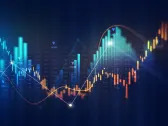In today’s market analysis, we’ll delve into the latest insights from Deutsche Bank on the S&P 500 (^GSPC) Cyclically-Adjusted Price-to-Earnings (CAPE) ratio. This metric, developed by Robert Shiller, is a fundamental tool in evaluating stock prices and identifying potential bubbles.
The CAPE Ratio: A Brief Overview
The CAPE ratio is calculated by dividing the current price of the S&P 500 by its 10-year average earnings. This metric provides a more comprehensive view of market valuation than traditional PE ratios, as it adjusts for inflation and business cycle fluctuations.
Deutsche Bank’s assessment highlights that the current CAPE ratio stands at around 35.6, which is above the historical mean of approximately 16.7. This suggests that the S&P 500 may be overvalued compared to its historical norms.
Parallels with the Early 2000s Tech Bubble
Madison Mills, Yahoo Finance anchor, examines the parallels between the current market conditions and those observed in the early 2000s tech bubble. During this period, the CAPE ratio also reached elevated levels, peaking at around 42.5 in March 2000.
Some key similarities between the two periods include:
- Elevated valuations: Both periods saw unusually high CAPE ratios, indicating that market participants were willing to pay premium prices for stocks.
- High expectations: In both cases, investors had high hopes for future earnings growth, driven by technological advancements and shifting economic landscapes.
- Complacency: As the markets reached their peaks, many investors became complacent, failing to recognize potential risks and red flags.
However, there are also some notable differences between the two periods:
- Interest rates: During the early 2000s tech bubble, interest rates were much higher than they are today. This made it more expensive for companies to borrow money and invest in growth initiatives.
- Globalization: The current market environment is characterized by increased globalization, with many multinational corporations enjoying significant advantages in terms of scale, efficiency, and access to international markets.
What Does this Mean for Investors?
So what does Deutsche Bank’s analysis imply for investors? While the CAPE ratio suggests that the S&P 500 may be overvalued, it’s essential to consider other fundamental factors before making investment decisions.
Some potential takeaways from this analysis include:
- Diversification: Given the uncertainty surrounding market valuations, investors should maintain a diversified portfolio, including a mix of value and growth stocks.
- Risk management: It may be prudent to reduce exposure to high-beta stocks or sectors that are particularly sensitive to economic fluctuations.
- Long-term perspective: In the face of market volatility, it’s crucial to maintain a long-term perspective and avoid making impulsive decisions based on short-term market movements.
Conclusion
Deutsche Bank’s assessment of the S&P 500 CAPE ratio provides valuable insights into current market conditions. While there are parallels with the early 2000s tech bubble, there are also some notable differences. As investors navigate this uncertain landscape, it’s essential to stay informed, maintain a diversified portfolio, and adopt a long-term perspective.
To stay up-to-date on the latest market analysis and expert insights, be sure to check out more Morning Brief videos here: [insert link].
Related Videos
- Yahoo co-founder suggests we’re in an AI hype cycle: In this video, we explore the potential implications of artificial intelligence on various industries and markets.
- Why markets are ‘jittery’ about Trump’s economic agenda: Our experts discuss the current market sentiment surrounding trade policies and their impact on investor confidence.
- Aurora CEO talks Nvidia partnership, autonomous trucking benefits: This video features an exclusive interview with Aurora CEO, discussing the company’s partnership with Nvidia and its potential applications in autonomous trucking.
View Comments
We invite you to share your thoughts on this topic by commenting below. What are your concerns about market valuations? Do you believe there are any parallels between the current environment and past bubbles?
Please note that all comments will be reviewed before publication.



